
Under the Canopy: Understanding Pecan Industry Stakeholder Concerns
New Mexico State University (NMSU) researchers are exploring stakeholder concerns about common issues facing the pecan industry. They are requesting industry participation in a short survey to help them understand and learn more about stakeholder concerns and issues. To access the survey, either copy the provided link and paste it into your web browser’s address...
Read more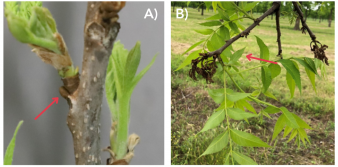
Exploring Pecan Secondary Buds as a Spring Freeze Crop Recovery Method
In recent communications with pecan growers, a prevalent concern has emerged regarding the susceptibility of pecan crops to spring freeze events. Spring freeze, when opening flowers are exposed to freezing temperatures resulting in the failure to bear fruit, poses a significant threat to pecan production in nearly all pecan-producing states. Spring freezes occur approximately three...
Read more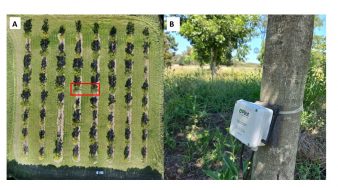
Summerly Coolers and Winterly Heaters: The hidden benefits of pecans on soil
In the southern part of South America, the summer is approaching, and with that are the worries about having the pecan orchards in suitable conditions to “start the race” for yielding nuts. The good news is that this will be a season with an El Niño event, meaning a wet summer and potentially high nut...
Read more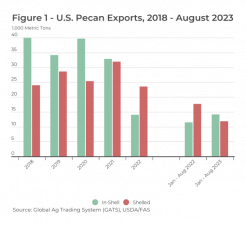
Importance and Issues of Pecans in the Global Market
During 2022, the United States exported 14.0 thousand metric tons (TMT) of inshell pecans and 23.6 thousand metric tons (TMT) of shelled pecans (Figure 1). These exports totaled over $308 million worth of value for the industry, with $63.5 million coming from inshell exports and the other $244.6 million coming from shelled exports. Total inshell...
Read moreTexas A&M Researchers Announce Winners from Marketing Label Study
Earlier this year, a team of researchers at Texas A&M University’s Department of Agriculture and Life Sciences invited pecan industry members to participate in a study about consumer decision-making and consumer preferences for pecans. This research arose out of the belief that understanding an expert’s ability to accurately forecast the effectiveness of marketing efforts to...
Read more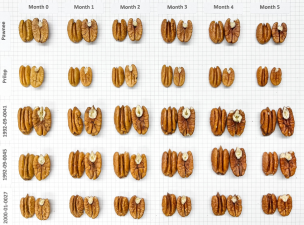
Store Your Pecan Wisely
Pecan harvest is here, and as always, customers consider the best way to store the nuts they purchase. Renowned for their nutty, buttery flavor, a variety of essential vitamins, minerals, healthy fats, and antioxidants, pecans offer unique nutrient benefits for human health. A study published in Nutrients in 2018 (Cupisti et al. 2018) showed that...
Read more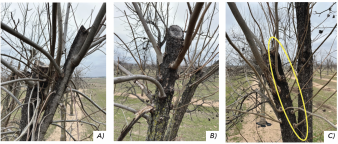
Pruning Management in Ice-Storm Damaged Pecan Trees
Ice storm damage is one of the major factors limiting pecan production in Oklahoma. Throughout history, ice storms have struck Oklahoma several times and caused the loss of millions of dollars (Smith & Rhola, 2009). The latest severe ice storm in October 2020 damaged many pecan orchards in central Oklahoma; the severity of the damage...
Read more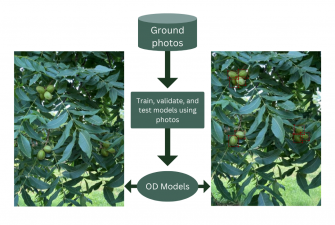
Addressing Alternate Bearing Using AI Technology for Enhanced Pecan Nut Thinning
The phenomenon of alternate bearing in pecan trees is characterized by an irregular fruiting pattern, wherein a substantial crop is followed by one or more years of minimal to no production, as Sparks (2005) noted. Compared to other seed tree crops, alternate bearing is more obvious in pecan trees which are within only a few...
Read more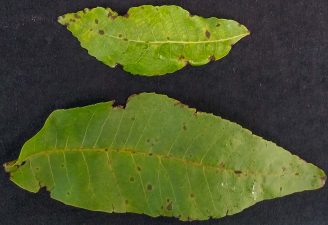
Proper Pecan Scab Program Critical for Preventing Fungicide Resistance
Pecan scab is a chronic fungal disease known as the most economically significant threat to pecan production in the southeastern United States and a cause for concern among pecan growers. Characterized by dark-grey or blackened lesions on leaves and shucks, pecan scab negatively impacts nutrient transport into nuts, leading to malformations and even fruit abortion....
Read more
Truffle Fungi Promote Pecan Seedling Growth
This is a continuing report of the truffle fruiting bodies found in Oklahoma that we introduced previously in Pecan South’s February 2023 issue (Preliminary Study of Pecan Truffles Found in Oklahoma). In July 2022, Leva Swim, an Oklahoma State University senior student, found some fungal fruiting bodies in the pecan roots in her backyard. As...
Read more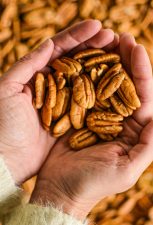
Results from Consumer Survey on Pecan Kernel Taste
The pecan tree (Carya illinoinensis) is native to North America and has been an important food source for indigenous people for thousands of years. In 1919, Texas declared the pecan tree its official state tree because of its relationship to the state’s history and culture. The domestication of pecans started in the 1800s, with the...
Read more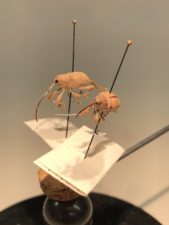
Use of Entomopathogenic Nematodes as a Management Tactic for Weevil Pests in Pecan
Scientists have described over 50,000 species of true weevil, making them one of the most diverse and successful groups of insects on the planet. Almost any terrestrial or freshwater plant can have one or more weevils associated with it. In addition, no part of the plant— roots, flower, buds, leaves—is exempt from attack by weevils...
Read more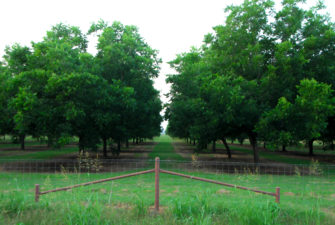
Invitation to participate in a study about consumer preferences for pecans
A team of researchers at Texas A&M University’s Department of Agriculture and Life Sciences is conducting a study about consumer decision-making and consumer preferences for pecans. The team is also looking for insight from pecan industry members. All U.S. pecan industry members are invited to participate in this study. If you agree to take part...
Read more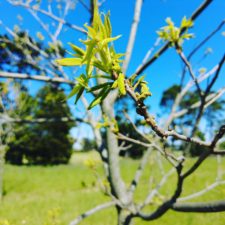
How Pecans May Help Lead to Net Zero Carbon
`Since ancient times, farmers have viewed the soil as a source of wealth to preserve and as an indicator of environmental health. For example, the Roman writer and politician Marcus Porcius Priscus (234-149 BCE), better known as Cato, noted in his famous essay “De Agri Cultura” many usual agricultural practices carried on vineyards and olive...
Read more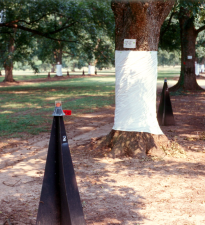
USDA SEFTNRS Reflects on 50 years, Looks to Future
The USDA-ARS, Southeastern Fruit and Tree Nut Research Station (SEFTNRS) in Byron, Georgia, was established over half a century ago on May 18, 1970. In this article, we present some of the many key accomplishments from the past 50 years and also a snapshot of current and future research. The SEFTNRS can point to many...
Read more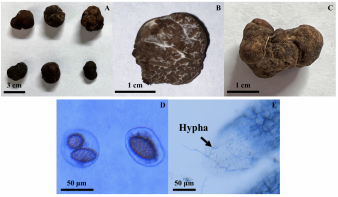
Preliminary Study of Pecan Truffles Found in Oklahoma
Pecan has been reported to form a symbiosis with ectomycorrhizal fungi, like truffles (Hanlin et al., 1989, Trappe et al., 1996, Benucci et al., 2012). Since Tuber lyonii ectomycorrhiza is commonly found in pecan orchards, it’s referred to as pecan truffles. Though there are many truffles native to the United States, the pecan truffle is...
Read more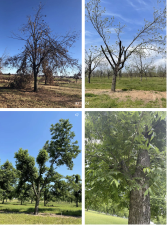
Discovering Pecan Roots Through Ground-Penetrating Radar
In the article “Pecan Tree Management After Storm Damage,” published with Pecan South in this year’s June issue, we discussed a long-term study to evaluate the management of epicormic shoot regrowth and nitrogen justification of trees’ partially lost canopy in an ice storm. At that time, we focused on canopy management and rarely thought about...
Read more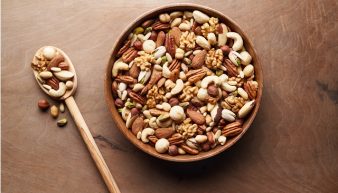
Nut Consumption Improves Cognitive Function and Modulates Gut Bacteria, New Study Suggests
Nov. 10, 2022—A recent INC-funded study published in the Journal of Nutrition showed that after four weeks of consumption of nuts in a healthy non-elderly sample, there are positive effects on cognitive function as well as modulation of microbial taxa associated with gut health. The goal of this clinical study was to examine the effects of...
Read more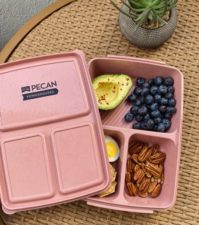
The Need for Nutrition Research: Reframing Consumers’ Perception of Pecans
The American Pecan Council is a federal marketing order established in November 2016 with oversight by the U.S. Department of Agriculture (USDA). The purpose of the order is to assist the American pecan industry in the promotion, research, standardization, and consumer information of U.S. pecans. The order provides the pecan industry a means to develop...
Read more
UGA Researchers Seek to Crack Shelling Challenge
Researchers at the University of Georgia College of Engineering are trying to crack a tough problem: extracting more high-quality kernels from shelled pecans. The team aims to identify the factors and variables controlling kernel extraction and provide solutions for increasing half yields. In the short term, the researchers will look for specific ways to improve...
Read more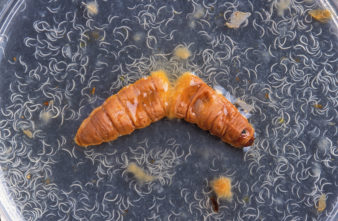
Considerations for applying beneficial nematodes for pest control
Summary Beneficial nematodes (entomopathogenic nematodes) are effective in killing the ground-dwelling stages of pecan weevil. The use of beneficial nematodes is compatible with organic pest control approaches. Like many biocontrol agents, some special considerations for applying beneficial nematodes are necessary, such as appropriate temperatures, soil moisture, and avoidance of UV light. Beneficial nematodes can be...
Read more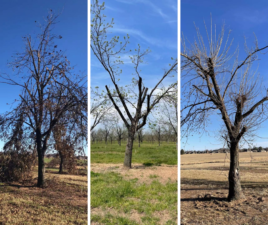
Pecan tree management after ice storm damage
A late October 2020 ice storm destroyed many pecan orchards in central Oklahoma, including an experimental orchard belonging to Oklahoma State University located in Perkins, Oklahoma. The average canopy loss in the experimental Orchards was about 50% (Fig 1. a, b). Ice damage is typically more severe in pecan orchards than in other orchard crops...
Read more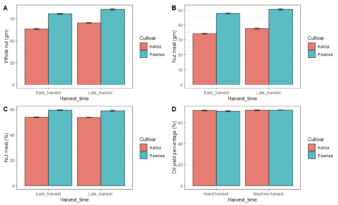
How harvest timing affects nut quality
Harvest timing is integral to pecans’ sales price and a necessary concern for avoiding fall freeze or ice storms in Oklahoma. We learned a lesson last winter when an early ice storm hit central Oklahoma, causing severe limb damage before many growers harvest. This event caused both a long-term loss of production from damaged trees...
Read more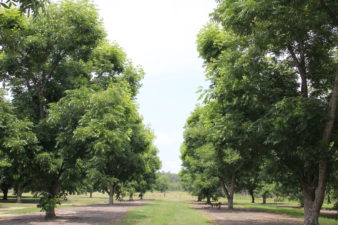
Using genomics to improve our future pecan trees
In a project funded by the United States Department of Agriculture’s (USDA) National Institute of Food and Agriculture (NIFA), a team of scientists, including several from the HudsonAlpha Institute for Biotechnology and USDA Agricultural Research Service (ARS), created a valuable tool for future improvements in pecan breeding by sequencing the complete genomes of four varieties...
Read more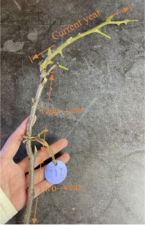
Insight into alternate bearing — do carbohydrates drive it?
The alternate bearing of pecan shows a symptom of irregular fruiting habit with one heavy crop followed by one or more years of poor production. The alternate bearing (one ‘on’ year, one ‘off’ year) trait in pecan is also sometimes referred to as “masting” (one ‘on’ year followed by two or more ‘off’ years), which...
Read more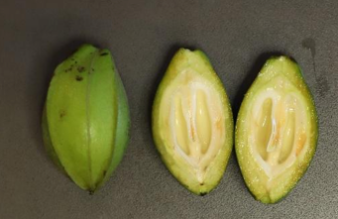
Irrigation Management for Pecans at Water Stage
Pecan nut growth has a special stage, water stage, which derives its name from the status of its liquid endosperm. Endosperm is the tissue providing nutrients for the growth of the kernel. Water stage occurs from the end of July through August. Trees require a large amount of water when nuts are at water stage....
Read more
Nut intake may increase cognitive performance of older adults
May 19, 2021—A team of researchers from the Institute for Physical Activity and Nutrition (IPAN), Deakin University, Australia, has studied the impact of consuming nuts on cognitive performance among older adults in the United States. The study included 1,814 participants all above the age of 60 from the National Health and Nutrition Examination Surveys (NHANES)...
Read more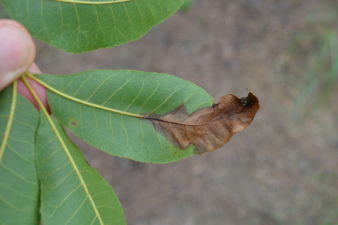
Neofusicoccum caryigenum, a new pecan pathogen finally gets a name
A new disease was observed on pecan trees in Georgia about nine years ago. Pecan is susceptible to numerous diseases, but these symptoms were unique and had not been observed previously. They were initially found on large ‘Stuart’ trees, specifically on leaflets with one or more galls from phylloxera feeding. The disease was subsequently found...
Read more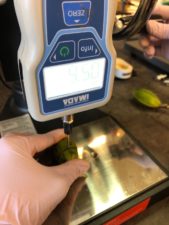
OSU Study Links Nut Firmness and Weevil Infection
Shell hardening is a natural defense that nut crops have to ward off insects, fungal infections, and to lock in moisture; however, this is a research topic that has drawn little attention in pecans. Previous research in pistachio demonstrates that shell-hardening fits the Gompertz non-linear model perfectly with a similar growth curve for kernel development....
Read more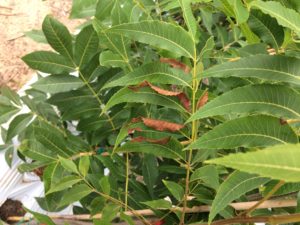
Pecan Bacterial Leaf Scorch, Emerging & Dangerous Disease
Emerging diseases often cause serious economic damage due to a lack of knowledge about the causal pathogens and improper preparation of management strategies. A telltale example is the COVID-19 pandemic. Its global economic damage is unsurmised and our daily lifestyles have been interrupted and changed by this pandemic. New, emerging diseases can also interrupt normal...
Read more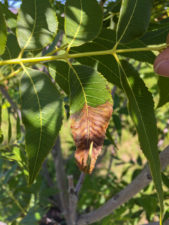
Improved detection of Xylella fastidiosa in pecan
Pecan bacterial leaf scorch (PBLS) is an economically important disease of pecan and is caused by the slow-growing bacterium, Xylella fastidiosa subsp. multiplex (Xfm)[1]. Xylella fastidiosa is native to North America, and there are several different subspecies of the bacteria that impacts a large plant host range. Due to the global movement of humans and...
Read more
Planned Pecan Consumption in China
INTRODUCTION The last several months have seen an increase in calls from the pecan industry for actual consumer research. These calls have largely been driven by the realization that we as an industry do not have a clear understanding of what motivates consumers to purchase pecans in either domestic or foreign markets (Nadler, et al....
Read more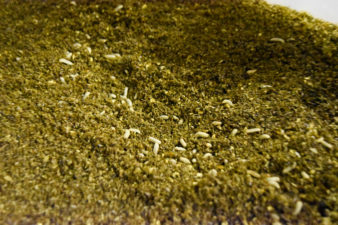
Nature’s Garbage Disposal Transforms Pecan Waste
The black soldier fly has been recognized globally for its ability to recycle organic waste and convert it to insect biomass and fertilizer. Most people in the southern United States may have seen this species in the adult or larval form in association with their compost pile or other organic waste. Adult black soldier flies...
Read more
New Study Suggests Australians Should Increase Their Nut Consumption
March 11, 2020. A recent study, published in the journal Public Health Nutrition1, revealed that 40 percent of Australians were found to be “nut consumers,” but just 2 percent ate the recommended 30 grams of nuts a day (about a handful); the other 60 percent did not report eating any nuts. This study, carried out...
Read more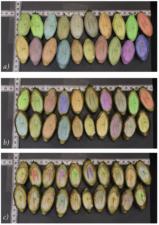
Know Your Nuts – From Flowering to Fruiting
Scheduling irrigation, pesticide sprays, and preparing the orchard floor for harvest are all tied to how pecans develop into mature nuts, and how they grow in any given year. Our current language about pecan growth highlights some key growth points. One such example is the water stage—the best time for fruit thinning to better regulate...
Read more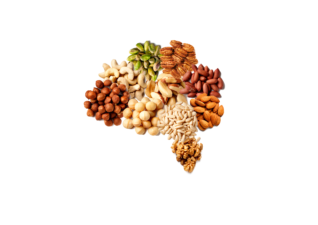
Higher Nut Consumption May Help Prevent Cognitive Decline in the Elderly
November 2019. A recent INC-funded study, published in Molecular Nutrition & Food Research1, showed that a high intake of nuts may help protect the elderly from cognitive decline. A team of researchers examined whether a diet high in nuts might help protect against age-related cognitive decline over a three-year period. A total of 119 participants...
Read moreFamily Trees: The Next Generation
The USDA-ARS Pecan Breeding & Genetics Program is at a transition point. In the past three Pecan South articles, we looked at the collection of living inventories that has grown from a “breeder’s collection” to represent global Carya populations, forming the National Collection of Genetic Resources for Pecans and Hickories (NCGR-Carya). Using that collection, cooperative...
Read more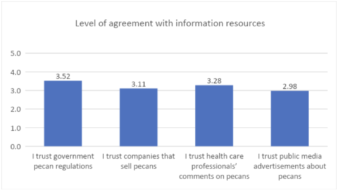
A Preliminary Study of Pecan Consumption Patterns in China: Part 2
In this month’s edition of Pecan South, we provide readers with the second part of the preliminary results from our ongoing data collection efforts in China. Before moving forward, we once again remind readers that these are preliminary results and subject to change, but we do not expect any potential changes to be statistically significant....
Read more
Pheromones Give Nematodes a Boost in Controlling Pests
BYRON, GEORGIA, July 25, 2019—Beneficial nematodes are used as biological control agents to fight a variety of insect pests that severely damage crops. However, in many cases the nematodes don’t measure up to other control methods such as certain chemical pesticides. A recent Agricultural Research Service (ARS) study, published in The Journal of Invertebrate Pathology, shows...
Read more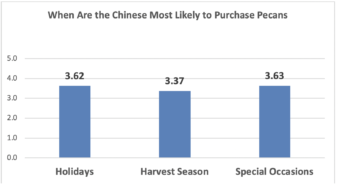
A Preliminary Study of Pecan Consumption Patterns in China
In the last three years, the U.S. pecan industry has been severely impacted by severe weather, floods and—to a lesser degree—the ongoing trade dispute with China. As a result, some readers may wonder why we should be interested in pecan consumption patterns in China, while they are struggling to rebuild their orchards and the industry...
Read more
New Study Reveals an Inverse Association between Nut Consumption and Cardiovascular Diseases
July 2019. According to the World Health Organization, cardiovascular disease (CVD) is the leading cause of death worldwide, affecting approximately 17.9 million people in 2016.1 A healthy diet is one component of the type of lifestyle that should be promoted to deal with this global health concern. Several healthy dietary patterns, such as the Mediterranean...
Read more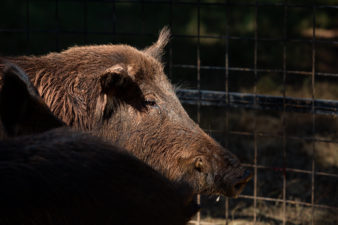
Wild Pigs: Another Problem for Pecan Producers
Not that producers need any more problems, but there is a major problem that can affect all types of operations. And, worst of all, it has four legs, bad habits and high intelligence. This creature is none other than the wild pig. For those who attended the 2018 Texoma Cattlemen’s Conference, I referred to wild...
Read more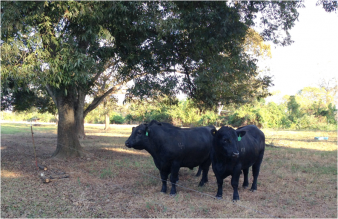
Examining a Kill Step for Inshell Pecans
Pecans are one of the most desired tree nuts in the United States. The demand for the nut and its production has been increasing every year. In comparison to 2016, pecan production in the U.S. increased by 8.5 percent in 2017, which resulted in approximately 300 million pounds of pecans. In the past few years,...
Read more
It’s Time to Get Your Costs Under Control
It’s no secret that pecan growers have benefited from higher than normal prices for the last several years. As a result, many growers have increased their pecan acreage and replaced less productive trees and varieties with more productive ones. Unfortunately, the laws of supply and demand dictate that the natural outcome of high prices is...
Read more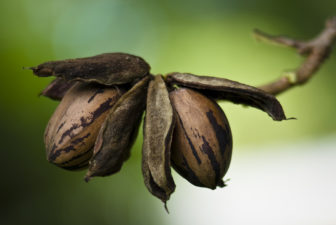
Q&A with Lead Researcher on Recent Pecan Nutrition Study Tufts University
Conducted by researchers at Tufts University, a new pecan study was recently published in Nutrients, an open access peer-reviewed scientific journal. This study, titled “A Pecan-Rich Diet Improves Cardiometabolic Risk Factors in Overweight and Obese Adults: A Randomized Controlled Trial,” examined the link between eating pecans and risk for cardiometabolic diseases in adults who were...
Read more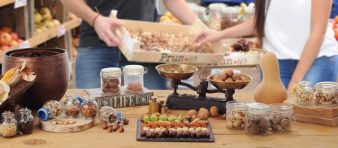
New Study Links Nut Consumption & Reduced Weight Gain
A recent study published in the European Journal of Nutrition investigated the association between nut intake and changes in body weight after five years of follow-up. Researchers also estimated the risks associated with overweight or obesity after higher nut consumption. Nuts are energy-dense foods; they can provide 160-200 kcal per serving (30g a handful), so...
Read moreAdvancing DNA Fingerprint System in Pecan
ARDMORE, Okla. — Six national institutions have become the first multistate and multidisciplinary study to receive funding specifically to work on pecans. Researchers at The Samuel Roberts Noble Foundation, New Mexico State University, U.S. Department of Agriculture Agricultural Research Service (USDA ARS), University of Georgia, University of Arizona and the HudsonAlpha Institute for Biotechnology, recently...
Read moreUpdate on International Tree Nut Council Health Research
The pecan industry contributes at least $50,000 annually to the International Tree Nut Council’s Nutrition Research and Education Foundation. These funds are provided by the National Pecan Shellers Association, Georgia Pecan Growers Association, Texas Pecan Growers Association and Western Pecan Growers Association, and have been for a number of years. The mission of INC NREF...
Read more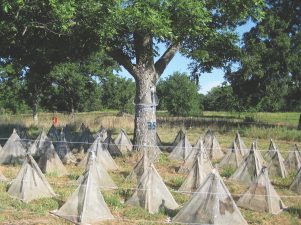
Circle traps a useful tool in pecan weevil management
The objective of this study was to determine the average percentage of ground-emerging adult pecan weevils caught in Circle traps placed on trunks. This knowledge is essential for estimating numbers of weevils infesting pecan trees prior to management decisions (Mount, 2014). Previous research by Raney and Eikenbary (1968), Mulder et al. (2003), and Cottrell and...
Read moreCan You Win At An Online Casino?
Table of Contents How To Win Slots At GW Casino Australia Play Roulette and Blackjack at Australia’s GW Casino Strategies To Win At Card Games Play Mobile Version of Australia’s Best Online Casino Can You Win At An Online Casino? How To Win Slots At GW Casino Australia If you’re looking for tips on how…
New study shows nut consumers have better diet quality
A new study, published in mid-January in the open access journal Nutrients, compares the nutrient adequacy and diet quality of those who consume tree nuts (almonds, Brazil nuts, cashews, hazelnuts, macadamias, pecans, pine nuts, pistachios and walnuts), and non-tree nut consumers in a nationally representative population. Tree nut consumption was associated with better nutrient adequacy...
Read moreWeevil management strategy important in native pecans
Growers of native pecans are well aware of the need to manage the pecan weevil (Coleoptera: Curculionidae) for prevention of unacceptable infestations of weevil larvae in harvested nuts. Previously, I reported on the dynamics of pecan weevil populations in the Mount orchard of 300 acres of non-irrigated river-bottom populated with about 3,000 native pecan trees...
Read more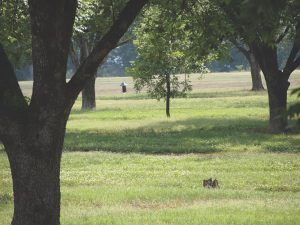
Prionus root borers in pecan orchards
One recent research project that has peaked the interest of pecan entomologists, horticulturalists and growers alike is the development of improved methods for monitoring and control of tilehorned prionus and broadnecked root borer – 2 insect pests that contribute to the decline and loss of production of pecan trees and are difficult to control. The...
Read moreConsumption of tree nuts inversely associated with risk of pancreatic cancer in women
In a large prospective study published online in the British Journal of Cancer, researchers looked at the association between nut consumption and risk of pancreatic cancer among 75,680 women in the Nurses’ Health Study, with no previous history of cancer. Consumption of nuts, including tree nuts (such as almonds, Brazil nuts, cashews, hazelnuts, macadamias, pecans, pine nuts, pistachios and...
Read more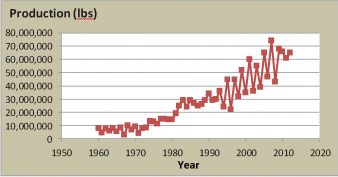
Contributing to a healthy environment
The western region irrigated pecan industry (Arizona, New Mexico and West Texas in the U.S. and Chihuahua, Coahuila, Durango, Nuevo Leon and Sonora in Mexico) has grown tremendously since pecans were first introduced in early 1900s. Mexico has over 96,000 hectares with an annual production valued at over $500 million (SAGARPA 2011). There are an...
Read more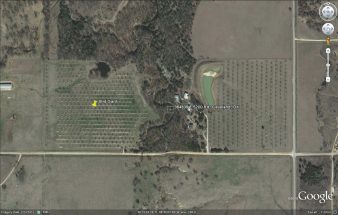
Mitigating pecan depredation losses
Pecan nut loss caused by wildlife depredation results in major economic losses. In small orchards depredation may result in total crop loss. Several avian species feed on pecan nuts; the more problematic species include the American crow and blue jay (Aldous, 1944; Bannon, 1921; Hall, 1979; Leppla, 1980; Martin et al., 1951; Murray, 1975; Wilson,...
Read more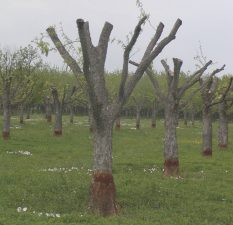
Pecan graft livability not affected by early stock limb removal
Abstract. Inlay bark grafting is a major technique used to establish pecan orchards and propagate improved cultivars on established trees of inferior cultivars. The standard technique is to remove stock limbs immediately before grafting. It would be a major advantage if growers could get this labor intensive process accomplished earlier, since grafting season is short...
Read more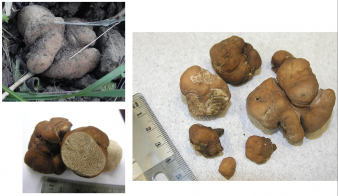
Pecan Truffle Research Underway in Texas
The word ‘truffle’ often evokes an image of elegant culinary items including the expensive garnish or flavoring of fine European cuisine. Although the aromatic, edible fungal fruiting structures that are known as truffles are more often associated with European countries, North America has several species that naturally grow in forests across the continent. One such...
Read moreINC reports plans for upcoming tree nut projects
For a number of years, the pecan industry has been contributing $50,000 per year to the International Tree Nut Council Nutrition Research and Education Foundation (INC NREF). The pecan industry’s funds have come from the National Pecan Shellers Association, the Texas Pecan Growers Association, Western Pecan Growers Association and the Georgia Pecan Commodity Commission. Other...
Read moreKernel Necrosis of ‘Pawnee’ Pecan
Kernel necrosis is a malady characterized by necrotic tissue at the basal end (stem end) of the kernel (Fig. 1) (Smith et al., 2007). It was first reported in an orchard near Charlie, Texas, and has since been identified in several orchards with ‘Pawnee’ trees located in the Red River Basin located along the Oklahoma...
Read moreStudy evaluates Bird Gard system for controlling birds
For pecan growers Danny Tingle and Jarred Allred, the sounds of birds squawking in their trees means more money in their pockets, more of their nuts are making it to processing, and less are ending up as expensive bird feed. This past harvest, the 2 growers from southeastern Arizona took part in a research trial...
Read morePecan Aphids: Part 2 – tools for managing pesticide resistance
This is the second of a 2-part series on pecan aphids and insecticide resistance. In last month’s Pecan South, we published Part 1 of this article that focused on data from 2011 Texas laboratory and field insecticide tests that looked at possible imidacloprid resistance in Texas were presented while this month’s column will focus on resistance...
Read more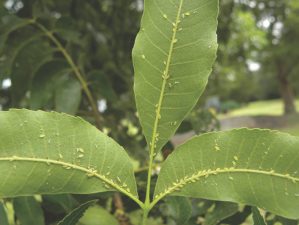
Project Addressing Aphid Resistance to Imidacloprid
Results of studies recently conducted in Texas indicate that blackmargined aphids may be showing resistance to the commonly used neonicotinoid insecticide imidacloprid, which brings us to the purpose of this month’s column: IPM and Insecticide Resistance Management (IRM) of pecan aphids. Pests’ resistance to pesticides has been a major problem since pesticides have existed. Insecticide-resistant...
Read moreSurvey IDs Pecan Marketing Opportunities
Consumers in the U.S. think about pecans – and use them – differently than most other nut varieties, according to a new national survey conducted by Blue Chip Marketing, a market research firm based in Chicago. Snacking is the most common eating occasion for nuts in general, according to the data. Meanwhile, consumers are more...
Read moreWhat is a Native Pecan Sprout Worth?
This past winter we identified several young pecan sprouts that were surrounded with briars and brush that had been previously ignored because they were not on perfectly flat ground as was the main orchard. They were close to water and beavers had already taken many other young trees in the area. The first step was...
Read moreInactivation of Salmonella by Hot Air and Oil Roasting
Salmonella is known to have exceptional heat resistance when it is in foods with low moisture content. For example, it requires 11 to 75 minutes at 194 degrees F (90 degrees C) to reduce the number of Salmonella in milk chocolate by 1 log CFU (colony-forming units)/g (1 log/g = 10 cells/g). This is only...
Read moreLipan Pecan: New Trial Variety For All Growing Areas
‘Lipan’ is a new pecan [Carya illinoinensis (Wangenh.) K. Koch] variety released by the U.S. Department of Agriculture (USDA), Agricultural Research Service (ARS). The Lipan are a Native American Apache tribe (Hodge, 1975). During various periods of the 18th and 19th centuries they roamed from the lower Rio Grande in New Mexico and Mexico eastward through...
Read moreSurvey Reveals Profile of Typical Pecan Consumer
ATLANTA – Who snacks on pecans in the U.S.? Hint: think Steel Magnolias. The profile of a typical pecan snacker is a 52-year-old, educated, affluent, married, white Southern woman, according to a leading market research firm. The National Pecan Shellers Association (NPSA) recently obtained data from GfK MRI to better understand the American pecan consumer. ...
Read moreIndustry Meets to Pinpoint Research and Extension Priorities
A common misconception among clientele is that funding for research and Extension activities is available from the university. Thirty years ago a large portion of the funding was based on “formula funds”, those funds allocated by the federal government for states to administer as needed to support agricultural and human environmental science programs. This gradually...
Read moreLoma Linda University Shows Antioxidants in Pecans May Contribute to Heart Health & Disease Prevention
Loma Linda, California – A new research study from Loma Linda University (LLU) demonstrates that naturally occurring antioxidants in pecans may help contribute to heart health and disease prevention; the results are published in the January 2011 issue of The Journal of Nutrition. Pecans contain different forms of the antioxidant vitamin E — known as tocopherols, plus...
Read moreBehavior of Salmonella on High-Moisture Pecans
All microorganisms require water and other nutrients to grow. In the absence of one or both, microbial cells will die or go into a dormant, non-reproductive state. Molds generally require less moisture to grow than do bacteria. Hence the need to reduce the moisture content of in-shell pecan kernels as well as shelled nutmeats to...
Read moreShellers Launch Prevalence Study, Focus on Food Safety
The National Pecan Shellers Association has listened and heard over the past few years about the importance and increased emphasis on food safety. Invited speakers at several of NPSA’s recent meetings have focused on this topic. And now NPSA is making a considerable investment in determining precisely the “prevalence of Salmonella in pecans.” NPSA has...
Read morePhosphorus, Potassium Affect Leaf Necrosis, Fruit Quality and Return Bloom
Pecan fruit production is irregular, typified by high production one year followed by one year or more of low production (Sparks 1986). Alternate bearing is typically associated with a lack of return bloom rather than flower or fruit abortion. Certain cultural practices, such as nutrition, light and water management, fruit thinning, vegetation control and others,...
Read moreSalt Leaching In Pecan Orchards Of The Southwest
Pecans, along with almonds and walnuts, are among the most salt-sensitive tree crops currently grown under irrigation. Many growers are not aware that salts are affecting tree growth, nut yields and quality, because symptoms of salt-affected trees are difficult to differentiate from water stress (Fig. 1). Diagnosis of salt problems and general approaches for minimizing...
Read more